Stop by and indulge in a little history of what used to be the largest natural gas field in the world.
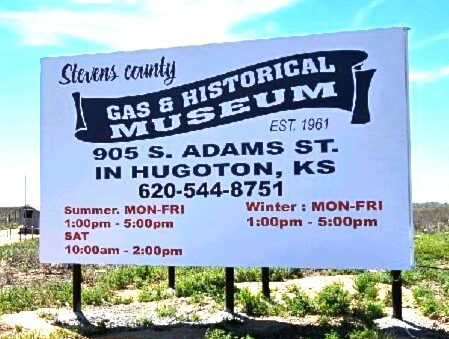
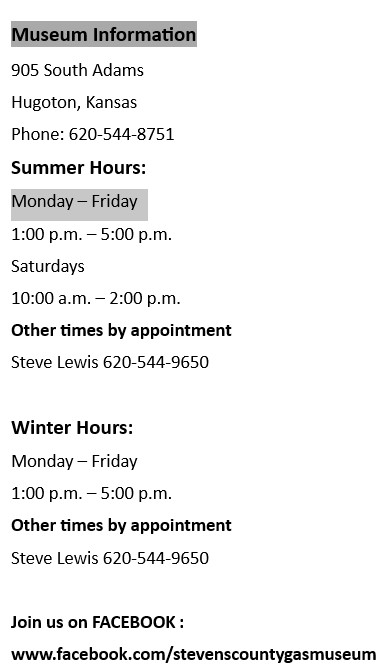
The Stevens County Gas & Historical Museum was dedicated on May 16, 1961. It was established as a memento of the Hugoton Gas Field and the progressive development of Stevens County.
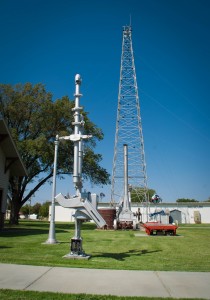 Currently, the gas well, drilled in 1945, is still producing. The 1945 well equipment is on display at the site of the well.
Currently, the gas well, drilled in 1945, is still producing. The 1945 well equipment is on display at the site of the well.
The main museum building houses displays of early 1900 furnishings including a chapel, dining room, parlor, kitchen, and a sewing room. Also, in the main buildings displays of Indian artifacts, farming tools, a printing and western shop, and art room bring back life in the days of long ago.
Completely restored buildings on the half-block museum complex include the Santa Fe Hugoton Train Depot, an 1887 school house, an 1887 home (one of the oldest homes in Hugoton), and an early day grocery store and barber shop. There’s a Professional Building (a tribute to Hugoton’s past judges and lawyers), the first jail house in Hugoton, and a 1905 church (the second church built in Hugoton). The Agricultural Building, completed in 1995, offers extensive displays of farm equipment & implements.
Your browser doesn’t support JavaScript or you have disabled JavaScript.
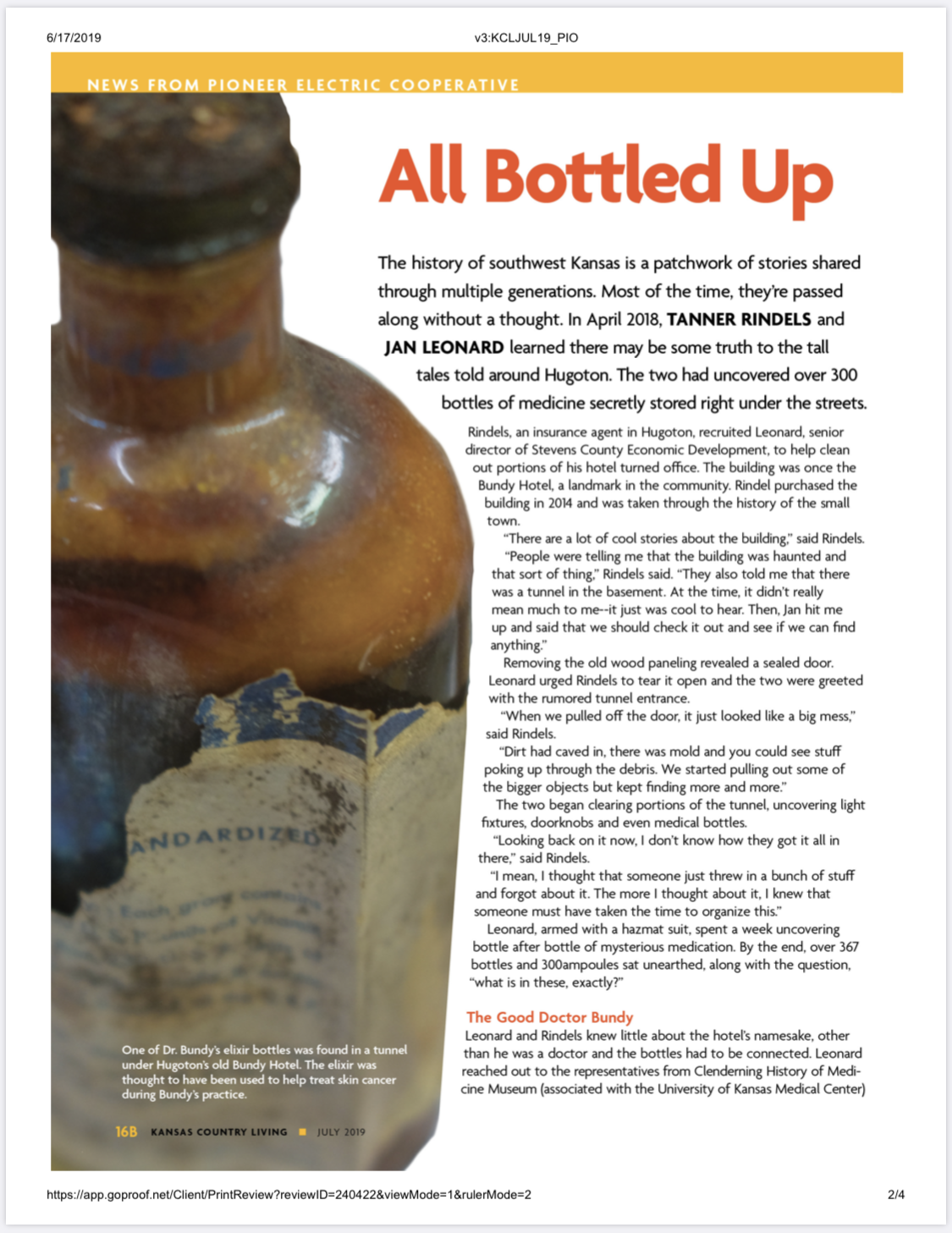
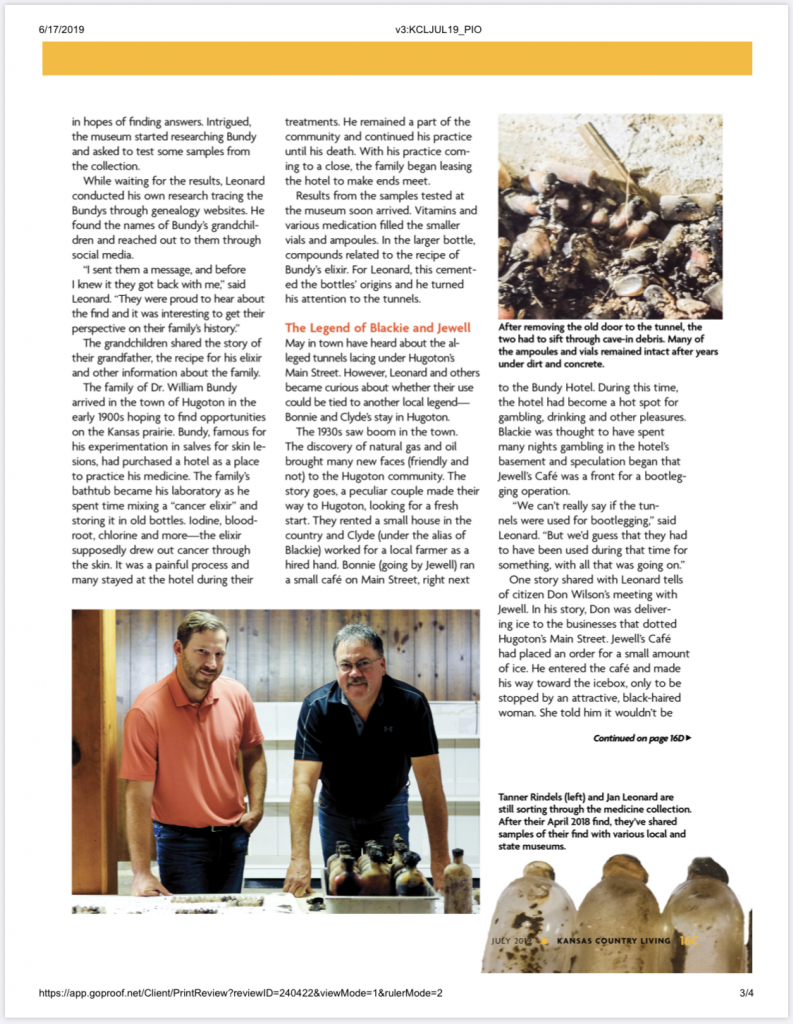
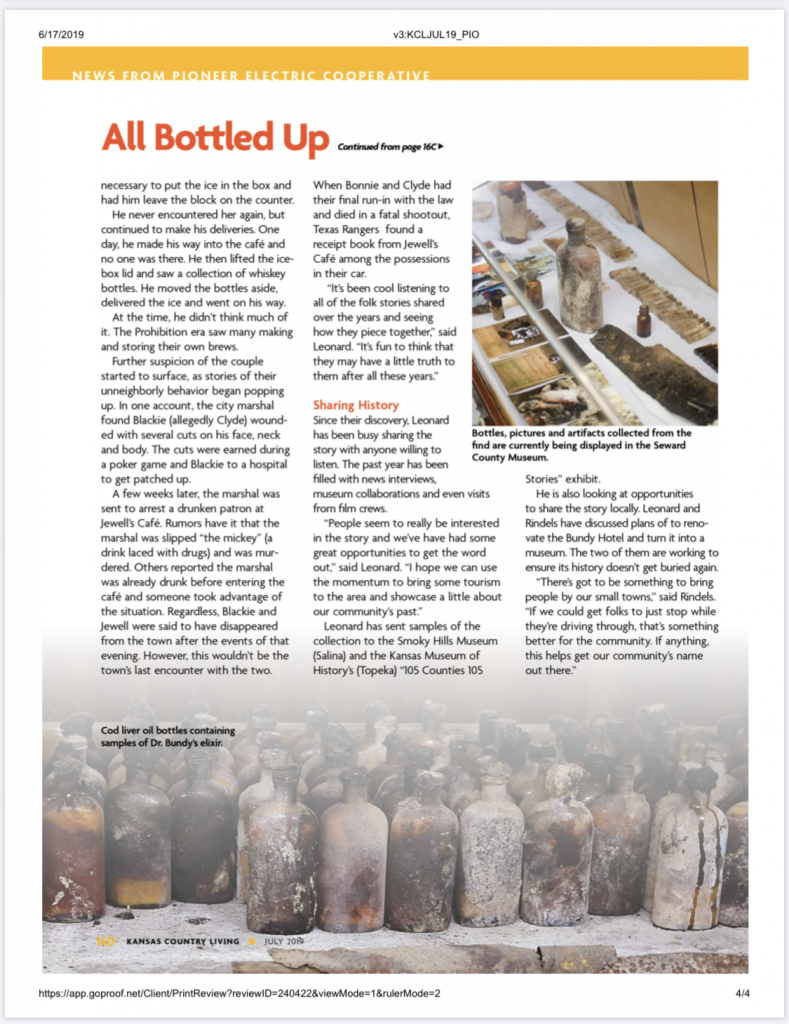
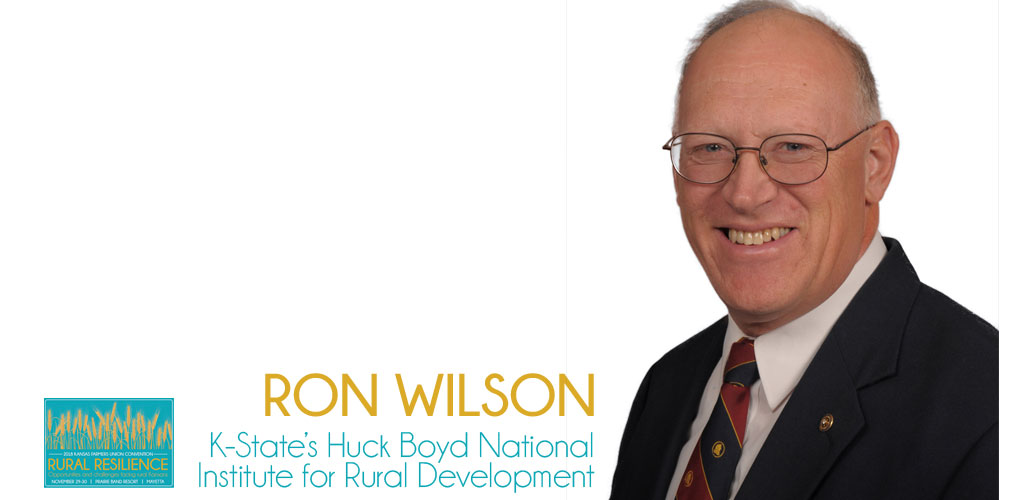
This is Kansas Profile. I’m Ron Wilson, director of the Huck Boyd National Institute for Rural Development at Kansas State University.
Buried treasure. Bonnie and Clyde. These are terms that might be found in adventure stories or action movies. Today we’ll learn about a community which didn’t find buried diamonds or gold, but it did uncover historic remnants of pioneer medicines from a century ago. What’s more, this community is believed to have once harbored the infamous outlaws, Bonnie and Clyde. It’s today’s Kansas Profile.
Jan Leonard is economic development director of Stevens County in southwest Kansas. He told the story of the remarkable things which have recently been found in the county seat town of Hugoton.
Old tunnels connected several of the buildings in downtown Hugoton. Most of these had fallen or filled in through the years, but in April 2018, one semi-collapsed tunnel was found under a building called the Bundy Hotel.
Dr. William Bundy opened a medical practice in Hugoton in 1912. He bought a building on Main Street, set up his medical office there, and opened part of it as a hotel. When patients needed a place to recover, they could take up residence there. The building became known as the Bundy Hotel.
Dr. Bundy also developed a salve to treat skin lesions. The salve was said to “draw out” skin cancer after several weeks. The treatment was said to be painful but effective in some cases.
In 1927, a natural gas deposit was found southwest of town. This became the Hugoton Natural Gas Field, which would become one of the top five sources of natural gas in the United States.
Lots of workers came to Hugoton to work in the gas field. Other people were attracted as well. Among those who are said to have come to Hugoton were Bonnie Parker and Clyde Barrow, better known as the infamous outlaws Bonnie and Clyde.
As one might expect, it is hard to find documentation of outlaws who were trying to hide from the law, but stories about the couple have been passed down through generations from those who supposedly knew them.
While in Hugoton, the couple allegedly used the aliases of Jewell and Blackie Underwood. “Blackie,” Clyde Barrow, reportedly worked on a farm while “Jewell” ran the café in town. It was located next to the Bundy Hotel and was called Jewell’s Café.
Neal Gillespie was Jan Leonard’s predecessor as economic development director. Neal said his grandparents were neighbors of Bonnie and Clyde. Neal’s grandfather said he once had to run them off for stealing his gas. Some robbers never change.
According to legend, Clyde would gamble in the basement of the Bundy Hotel. Next door, Clyde and Bonnie were selling bootleg liquor from Jewell’s Café.
In 1934, while on a crime spree across the south, Bonnie and Clyde met their fate. They were ambushed and killed by law officers. In their bullet-ridden car, FBI agents found receipts from Jewell’s Café.
Back in Hugoton, in 2018, Jan Leonard found a boarded up wall in the basement of the Bundy Hotel. Behind this wall was a bunch of dirt and black mold. Jan got a Hazmat suit and spent a week cleaning out the tunnel. Here he made a remarkable find: Hundreds of bottles of old medicines from Dr. Bundy.
Jan found 367 bottles in the tunnel, along with vials of other liquids. Apparently these were some of the self-concocted medicines from Dr. Bundy, nearly a century ago. Jan sent samples of the medicines to the KU Medical Center in Kansas City for testing. KU Med center then built a display about these medicines. It can be viewed until May 1. They can also be seen at the Kansas Historical Museum in Topeka.
What remarkable history to be found in a rural community like Hugoton, population 3,831 people. Now, that’s rural.
“It’s an amazing find,” Jan Leonard said. For more information about Hugoton, go to www.stevenscountyks.com.
Buried treasure. Bonnie and Clyde. These sound like elements of an action movie, but they do have a connection to this community in southwest Kansas. We commend Jan Leonard and the Stevens County Economic Development office for making a difference by uncovering this history. Such historical finds are something we can treasure.
For the Huck Boyd National Institute for Rural Development, this is Ron Wilson with Kansas Profile.

